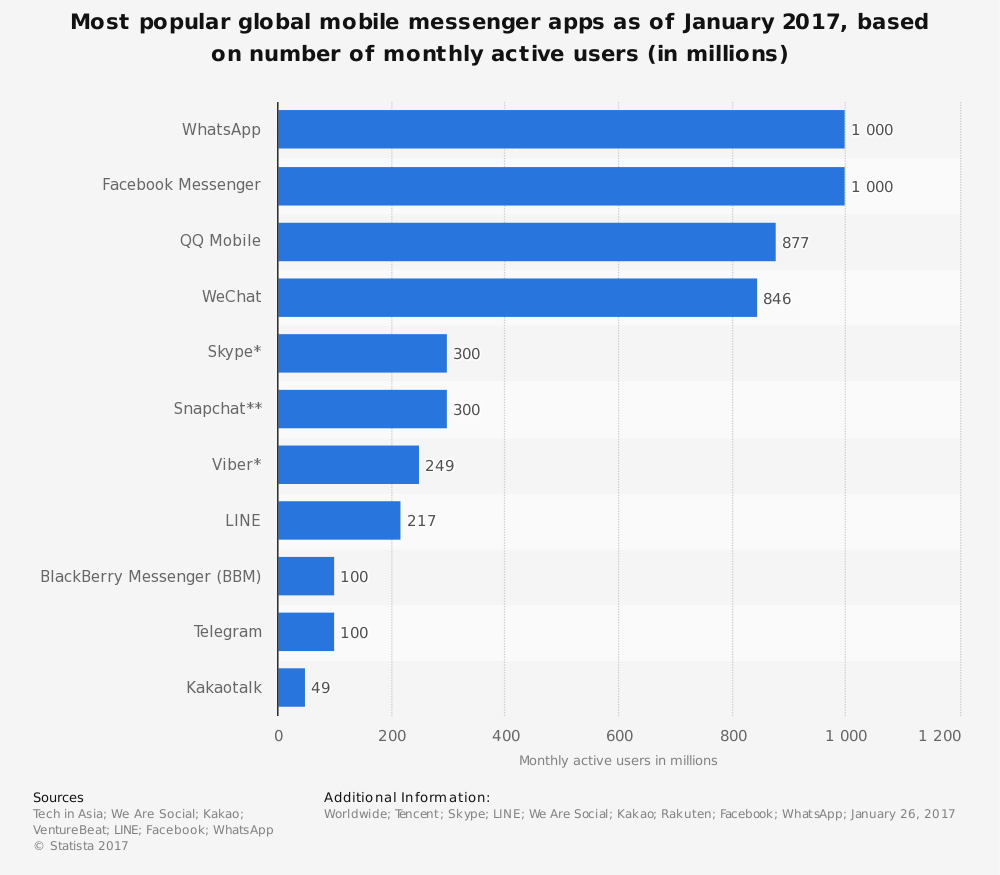Insurance company Allstate also found its chatbot investment worthwhile. Its bot, the Allstate Business Insurance expert (ABIe) — which helps 12,000 agents answer questions from customers — paid for itself by the end of its first year, according to Allstate.
And Charter, the U.S.’s fourth-largest cable operator, launched Alme, a support chatbot that led to a 44% cost reduction after a year, as well as 500% return on investment in the first six months.
3. Chatbot technology helps you make more informed decisions.
Once a chatbot is launched, its built-in data collection and analysis can reveal what’s working and where to fine-tune to keep experiences fresh and engaging. With automatic feature enhancements every few weeks, chatbots can become more efficient with every update.
“The future of business decision-making will consider how investments can evolve with the organization,” says Jared Shoemaker, senior manager of Digital Innovation services at Insight. “A chatbot can enhance its features with every development sprint and improve its responses based on previous conversations. This is a real value-add for organizations, not only cost-savings-wise, but also performance-wise.”
Some examples of how a chatbot can enhance its performance include:
- Sentiment analysis — Chatbots can be trained to associate certain words with human emotions. If a bot detects a word or string of words tied to “anger” or “frustration,” for example, it can react accordingly or reroute to a human for more robust troubleshooting.
- Natural Language Processing (NLP) — Leveraging data, businesses can understand where a chatbot may be getting confused or providing improper information during interactions. Developers can optimize NLP to expand the bot’s understanding of user requests despite slang or typing errors.
- Bot identity optimization — Users may be offended or feel detached if a bot suddenly shifts tones or ways of communicating. Data can track and analyze consistency in a chatbot’s “personality,” ensuring an organization’s brand voice is unwavering during interactions. If inconsistencies are found, developers can work with marketing to make appropriate adjustments to the chatbot script.
- Content variation — In the same vein as bot identity and brand advocacy, chatbots can be programmed to send photos, videos, GIF attachments or other types of content to add a more engaging dimension to each interaction.
4. Chatbot technology accomplishes more in less time.
Because chatbots can scale limitlessly, staffing up during seasons when customer requests peak isn’t necessary. With the ability to juggle many sessions at one time, chatbots easily handle fluctuations in the market without becoming overworked or needing a vacation.
PG Tips, a U.K.-based tea company, launched its own chatbot to generate donations for a charity campaign. The bot, named Monkey, was able to simultaneously engage more than 150 users per second and toggle among 215 different conversation topics.
That’s 150 potential staffers to move the company’s initiatives forward — condensed into one multitasking powerhouse.
5. Chatbot technology helps you invest more in your staff.
Because they’re able to do more in less time, chatbots are often seen as a threat to their human counterparts. Employees might be hard-pressed to accept chatbots, wondering, “Will this bot replace me?”
“While chatbots are touted for their ability to handle a lot more than your average Joe, the truth is that they enable businesses to be more strategic about their people. They actually expand their resources,” Dodge explains.
Enter the cobot, or collaborative robot, the partnership of bots and humans to work smarter and move business forward. Chatbot’s Life, a well-known chatbot blog, gives an example of cobots in business: “Bots can reduce waiting time by suggesting agent responses while the agent is chatting with the customer. Agents can handle high-level queries and tasks and can automate mundane tasks with chatbots.”
As businesses continue to optimize these give-and-take relationships between chatbots and humans, a culture shift is occurring, one of more acceptance and far less fear.
Conclusion: Should your business invest now?
Some industries are naturally slower to adopt new technologies, while the very sustainability of others depends on the cutting edge. No matter your industry, one piece of advice stands the test of time when considering chatbots: Don’t build a bot for the bot’s sake.
It’s important to assess your current business model, challenges and goals — and define specific use cases to determine the true value-add for your organization.
Experienced developers, such as Insight’s Digital Innovation team, can help you strategize properly, providing in-depth assessments, cost analyses and a human-centric, collaborative approach to design.
Exploring existing use cases such as the ones highlighted in this article can also aid in your decision-making. In addition, three industries, in particular, are best suited for chatbot technology.
Regardless of your business’s willingness to implement chatbots, automation is where the world is headed. Perhaps one of the most striking insights from Mindbowser’s study on chatbots is that 95% of businesses say they’re happy with the way the virtual assistants are helping their organization.
With that data — and as developers continue to improve chatbots at astounding rates — we’re eager to see how virtual agents will evolve for the future.











